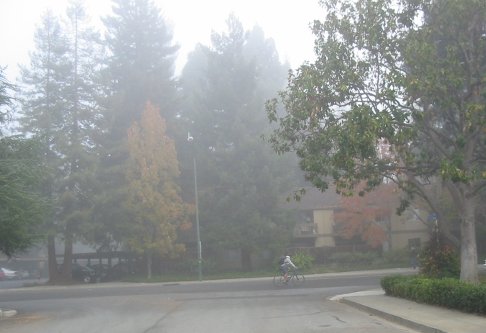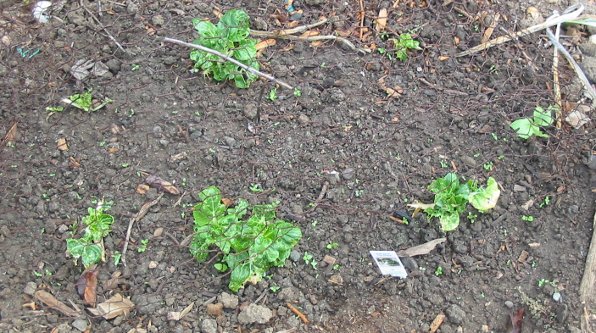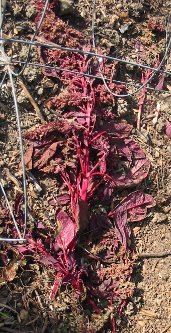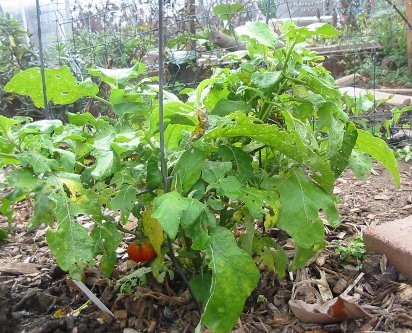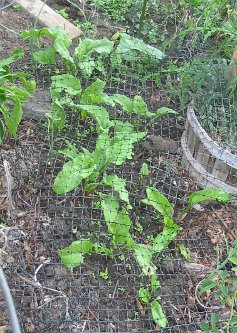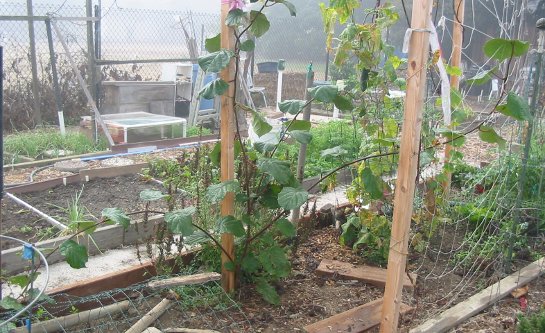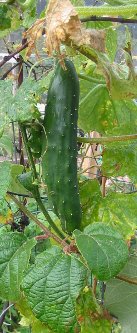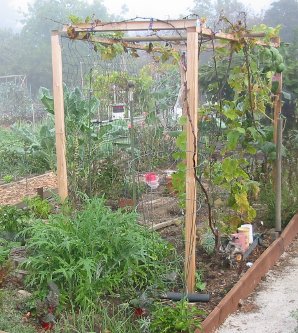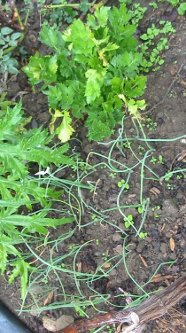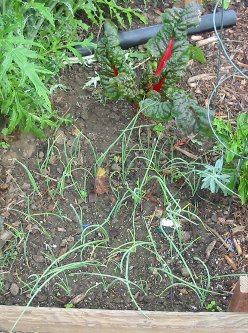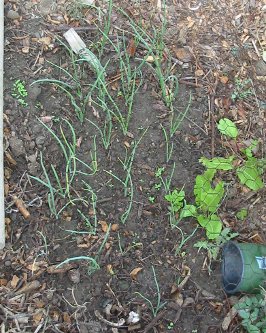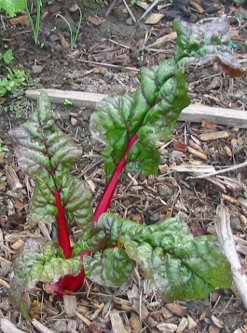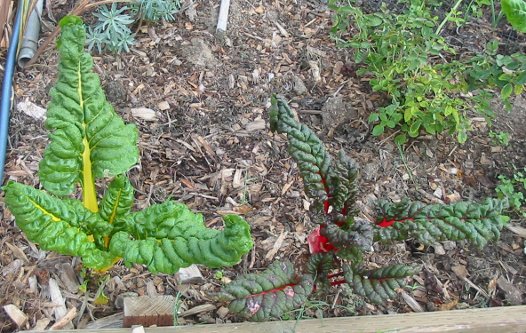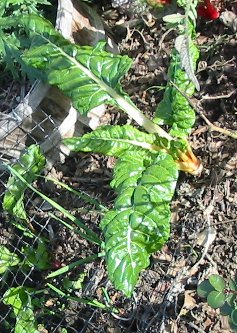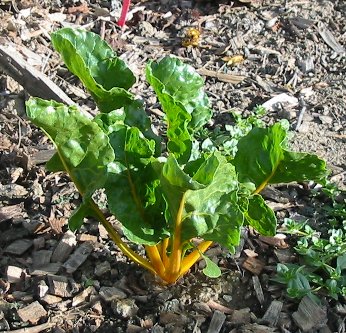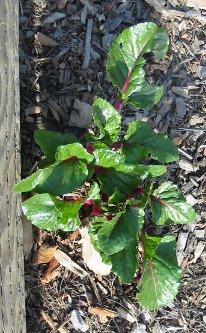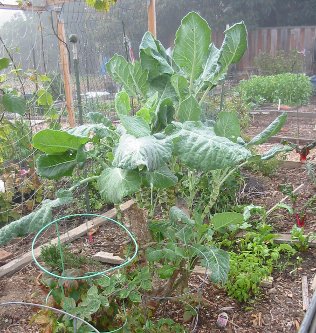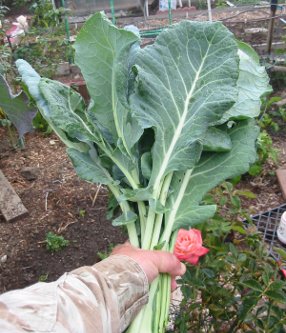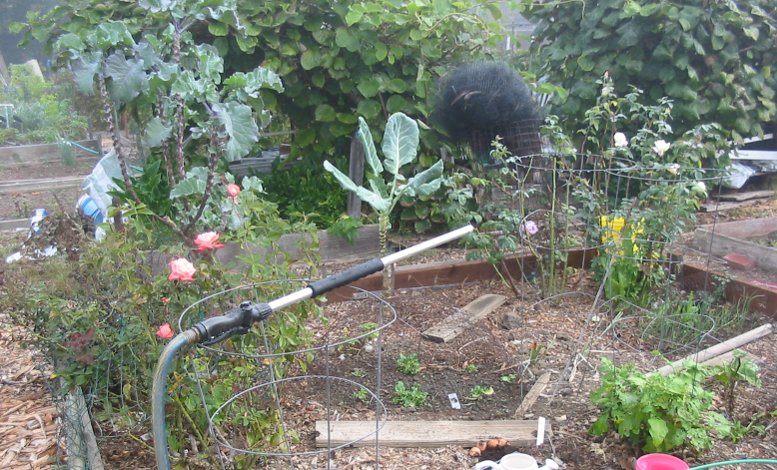I took most of these pictures on a
foggy morning, the only one I've enjoyed so far this year. It
makes me smile when I look up and see bicycles or pedestrians but
no cars going by. It happens much more than it used to.
Yup. That's my sage. I don't use much of it, but then it doesn't
need much water or anything like that. Glad to have a plant that
doesn't need me to do anything in that spot.
Overall, my plot is doing fine.
Sueli complimented me on the beauty of my garden during my annual
review. I don't really see the beauty, I just see a growing number
of plants I enjoy eating the fruits, leaves, and roots of. This
year my strategy was basically "do again all the things I enjoyed
last time, and maybe try a few more things." Specifically, the new
thing now is bok choi. Next spring I hope the amaranth will be a
new thing.
That bok choi was doing well for a
while. Then the bagrata bugs discovered it and started sucking the
guts out of the plants. I learned that the way to deal with them
is to spray insecticidal soap on all of the exposed surfaces. I
did that and it did cut way back on the bagrata bug problem. Then
it got cold and I stopped worrying about them. Not planning to
plant any more of that, but hoping they turn out to be delicious
plants despite all the stress.
Marci gave me a seed head from her
"reddest amaranth plant". I laid it on my plot where I want
amaranth to grow. It's a pretty plant, so I'm hoping it gives me
pretty offspring there.
This is my only remaining eggplant
bush. It's about a foot tall. The fruit in the close up on the
right is about life size when displayed at 100% size in my picture
editor. Pretty close to golf ball size in real life. I think this
is an eggplant for people that just want an ornamental plant they
can pretend to get food from. It's better than nothing but not
much. Lubab gets eggplants from her plot that the store would love
to sell. I know she gives her plants more water than I give mine.
I suspect she feeds them more plant food to.
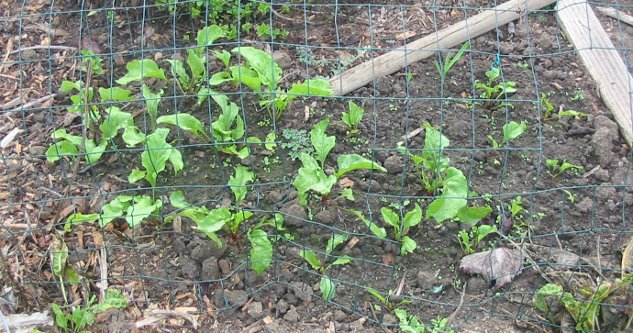
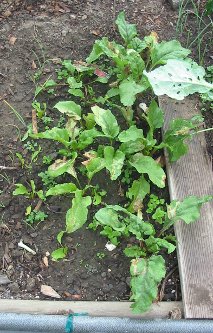
My beets are doing well. I first
planted them in the patch on the right above. I just sprinkled a
packet full of beet seeds over the area. Then I lightly tilled
them into the soil and sprinkled snail pellets around the area.
After watering for a couple of weeks little beets were popping up,
way too close together. I dug a couple of beds and then spread the
young beets around the area, giving them plenty of space to size
up. For a week or so the ones I transplanted acted dazed and
confused, but then they got used to their new homes and started
growing again. After about two months in the ground the biggest
ones are starting to be yummy food. Looking forward to a winter
with plenty of beets. Beet the system!
The volunteer kiwi is still doing
great. Supposedly the first frost will kill back her leaves. Then
she'll be dormant until spring, when it won't be long before we
learn if she will bear fruit for me.
The cucumber plant is still giving
me another fruit every now and then, but it is definitely slowing
down. Over the late summer I had more cucumbers than I knew what
to do with. I went from thinking of cucumbers as a spice in salads
to the kind of thing to eat like fruit. After doing a bit of that
I started enjoying the fact that they aren't sweet like real
fruit. Now I'm looking forward to growing them again next year.
The grape vines have gone to sleep
for the winter now. I planted the onions and celery under them
figuring I can harvest that before the grapes start shading the
land under them. Hoping that works out now!
I was down at Summer Winds looking
for ideas on what to plant. They had a six pack of onions for $4.
The seedlings were so densely packed it looked like onion grass. I
gently separated the plants and planted them one by one a few
inches apart. Now they are growing fine. I expect I'll have plenty
of red onions before it's all over for them.
My raspberry bushes have slowed way
down. Now it's an event when a berry is ripe enough to pick. Over
the summer I was getting a handful of very ripe berries every time
I went to the garden to water. I'm told that after the plants go
to sleep I should cut them back to stems about one foot tall.
That's what they will grow from next year.
The above are chards from the batch
I got last spring that were labeled "Bright Lights Chard". I enjoy
saying to someone else "Please notice that the power company has
nothing to do with the bright lights in my plot."
Chard is turning out to be a very
delicious soup ingredient. I cut a big leaf from each plant once
or twice a week, being careful to leave enough other growth behind
to encourage the roots. The big leaves weigh in at two or three
ounces each. Eight or nine ounces are plenty for a nice bowl of
soup. I cut the green from the stem. Then I chop the stems into
inch long pieces and throw them in with uncooked noodles. About
half way through cooking I add the leafy green part so it just
cooks down a little.
The one with the bright yellow stems
and the one with the many leaves and the almost hidden pink stems
are all that are left from the New Zealand chard I planted last
year. The rest of those bolted last spring. I'm wondering how many
of these will be around after bolting season next year. I like all
of these plants so much I'll probably let whomever goes to seed
run their course. I'd love to have a plot that's weedy with chard!
I still get a lot of greens from my
collards. They are amazingly generous plants.
That's a typical harvest. Probably
about two pounds of greens. I get that a time or two a week. Over
the summer I was getting so much I was giving away a harvest of
collards to someone else every chance I got. They have slowed down
a lot now, so I'm only getting a little more than I really want.
BTW: This is the perfect time of
year to transplant a collard cutting. I've a few to spare, so if
you want one let me know. I'd be glad to share.
Sometimes I wonder if there is a
great recipe for stuffed collard leaves out there. For sure these
leaves are big enough that it would work out well from a
structural point of view.
This is the view I look at when I'm
about to pick up the hose to start watering. As you can see, the
rose bushes are still doing well. I attribute that to a summer of
picking every rose as it passes its prime. If I hadn't deadheaded
then so much, they would be growing rose hips now instead of more
roses.
